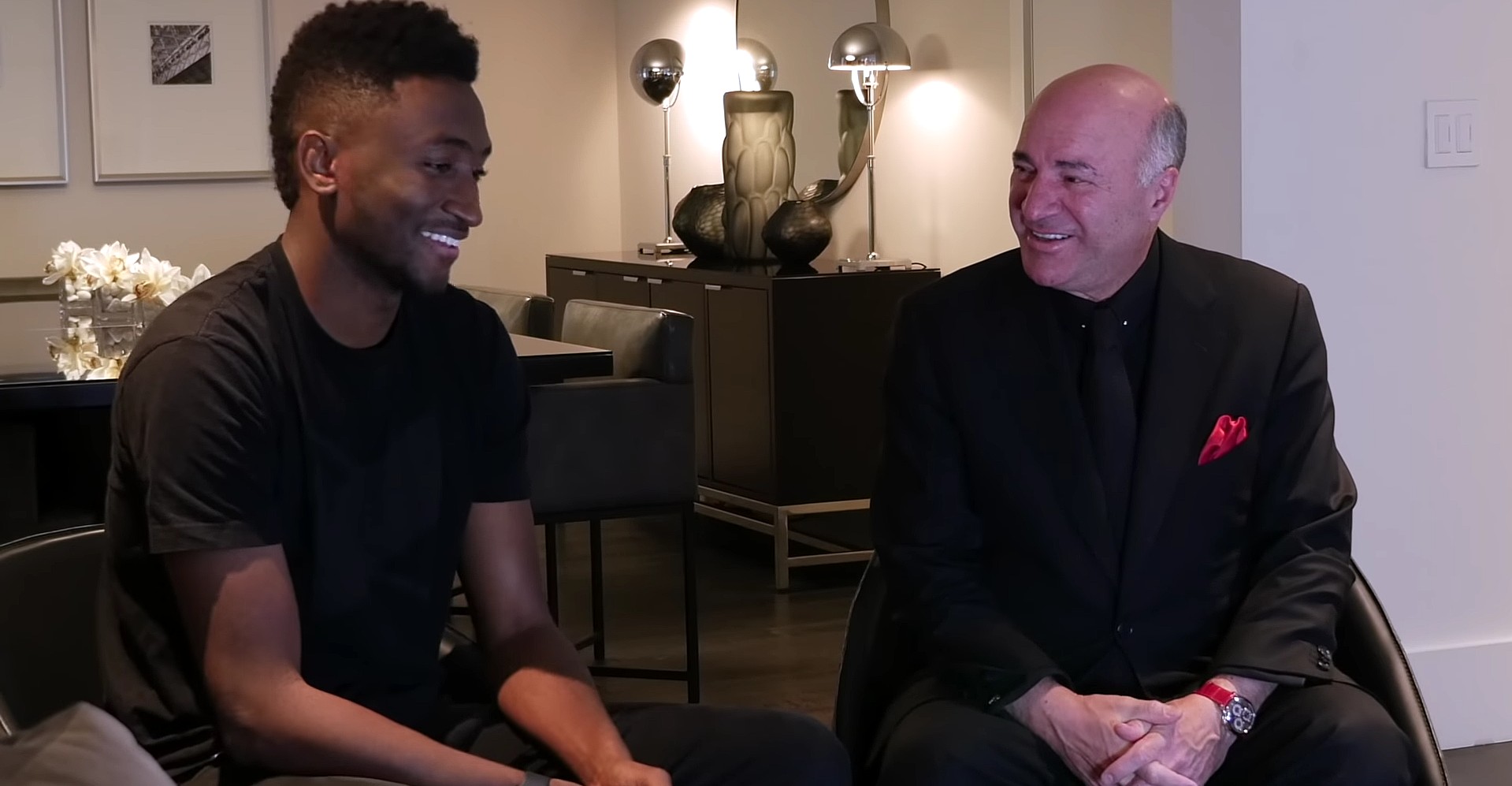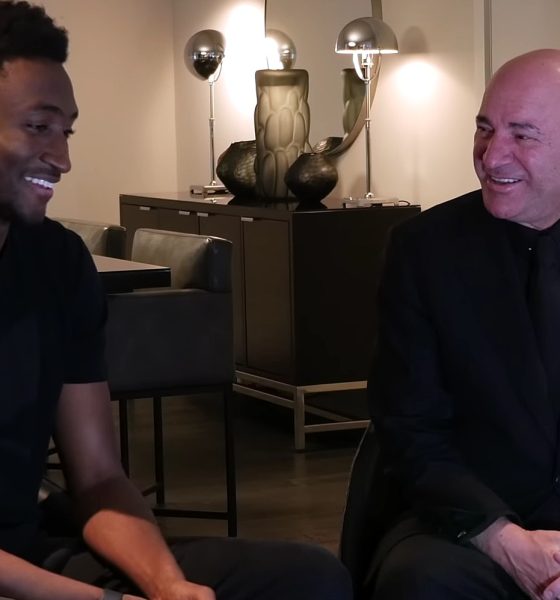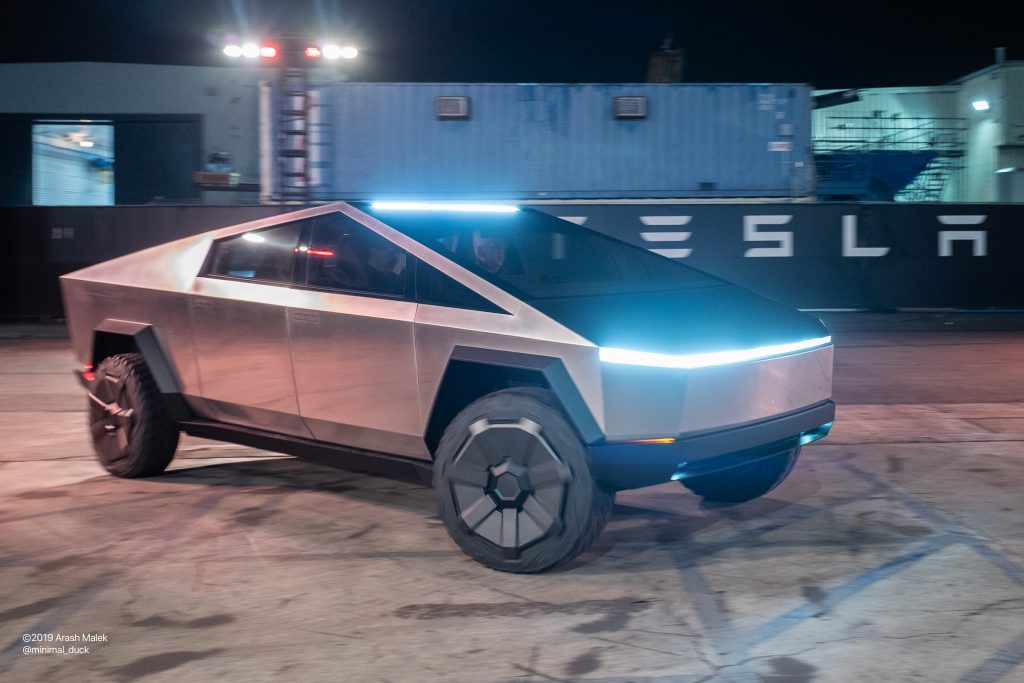

News
Tesla Cybertruck gets seal of approval from tough 'Shark Tank' judge Mr. Wonderful
The Tesla Cybertruck continues to grow on more and more people. Since its unveiling, auto experts and actual truck owners have come to defend the vehicle, dubbing the all-electric pickup as a bold move in function and form. The Cybertruck has indeed impressed its own fair share of Tesla critics, including, as it turned out, Shark Tank judge Kevin O’Leary, better known by his tongue-in-cheek nickname Mr. Wonderful.
Kevin O’Leary has not always been a fan of Tesla, particularly its stock, at one point even admitting that he hated TSLA. He has since changed his stance on the electric car maker, even investing in Tesla himself after seeing the capability of the company to attract the best and most driven talents available. Yet, despite this, O’Leary is still as sharp and critical as ever. In true Mr. Wonderful style, O’Leary is never one to hesitate when calling out something he deems as a failure.
One could recall a Shark Tank episode from 2016 involving aspiring entrepreneur Allison DeVane, whose idea for her business, Teaspressa, failed to get a positive response from any of the sharks. Shark Tank judge Lori Greiner was quick to console the contestant, saying “Don’t look at this as a failure.” O’Leary promptly countered, saying “Look at this as a failure.” His statement was met with much disdain from fellow Shark Tank judges and viewers alike, with fellow shark Mark Cuban telling O’Leary to “shut up.” Fans of the show also stated that it seemed all too easy for Mr. Wonderful to kick someone that was already down.

O’Leary has always been a direct and somewhat brash critic. In the case of the Tesla Cybertruck, Mr. Wonderful will likely be one of the first to say that the vehicle has no chance in the market. Yet, in a recent conversation with noted YouTube tech reviewer Marques Brownlee, O’Leary admitted that he actually placed a reservation for the upcoming all-electric pickup. He is even getting the tri-motor AWD variant so that he gets maximum range and power for long trips. Discussing his reservation, O’Leary stated that the Cybertruck is not really a pickup truck in the traditional sense of the word.
“It’s not a pickup truck. It’s some kind of other thing, but it’s grown on me. That Elon guy, he kind of steps ahead. He kind of reminds me of Steve Jobs in a way. I used to work for Steve in educational software and I’d always say to him ‘Steve, what about the research.’ He said ‘Screw the research.’ People don’t know what they want until I tell them.’ And I said, ‘You arrogant prick. How can you say that?’ And he was 100% right. That was it. He was not an easy guy to work for, I gotta tell you. And I’m trying to be nice,” O’Leary said.
O’Leary’s statements about market research are true. Tesla and Elon Musk did not do traditional market research for the Cybertruck, which is among the reasons why the vehicle in itself is so radical. Despite this, the vehicle is also a culmination of exchanges between Elon Musk and the online community, with both parties brainstorming features and capabilities that are most important in an all-electric pickup. As Mr. Wonderful said, people like the legendary Steve Jobs and Elon Musk are steps ahead. For visionaries such as these, market research may not be a very useful tool at all.
Watch Mr. Wonderful and MKBHD’s conversation in the video below.

Elon Musk
Elon Musk and Tesla AI Director share insights after empty driver seat Robotaxi rides
The executives’ unoccupied tests hint at the rapid progress of Tesla’s unsupervised Robotaxi efforts.

Tesla CEO Elon Musk and AI Director Ashok Elluswamy celebrated Christmas Eve by sharing personal experiences with Robotaxi vehicles that had no safety monitor or occupant in the driver’s seat. Musk described the system’s “perfect driving” around Austin, while Elluswamy posted video from the back seat, calling it “an amazing experience.”
The executives’ unoccupied tests hint at the rapid progress of Tesla’s unsupervised Robotaxi efforts.
Elon and Ashok’s firsthand Robotaxi insights
Prior to Musk and the Tesla AI Director’s posts, sightings of unmanned Teslas navigating public roads were widely shared on social media. One such vehicle was spotted in Austin, Texas, which Elon Musk acknowleged by stating that “Testing is underway with no occupants in the car.”
Based on his Christmas Eve post, Musk seemed to have tested an unmanned Tesla himself. “A Tesla with no safety monitor in the car and me sitting in the passenger seat took me all around Austin on Sunday with perfect driving,” Musk wrote in his post.
Elluswamy responded with a 2-minute video showing himself in the rear of an unmanned Tesla. The video featured the vehicle’s empty front seats, as well as its smooth handling through real-world traffic. He captioned his video with the words, “It’s an amazing experience!”
Towards Unsupervised operations
During an xAI Hackathon earlier this month, Elon Musk mentioned that Tesla owed be removing Safety Monitors from its Robotaxis in Austin in just three weeks. “Unsupervised is pretty much solved at this point. So there will be Tesla Robotaxis operating in Austin with no one in them. Not even anyone in the passenger seat in about three weeks,” he said. Musk echoed similar estimates at the 2025 Annual Shareholder Meeting and the Q3 2025 earnings call.
Considering the insights that were posted Musk and Elluswamy, it does appear that Tesla is working hard towards operating its Robotaxis with no safety monitors. This is quite impressive considering that the service was launched just earlier this year.
Elon Musk
Starlink passes 9 million active customers just weeks after hitting 8 million
The milestone highlights the accelerating growth of Starlink, which has now been adding over 20,000 new users per day.

SpaceX’s Starlink satellite internet service has continued its rapid global expansion, surpassing 9 million active customers just weeks after crossing the 8 million mark.
The milestone highlights the accelerating growth of Starlink, which has now been adding over 20,000 new users per day.
9 million customers
In a post on X, SpaceX stated that Starlink now serves over 9 million active users across 155 countries, territories, and markets. The company reached 8 million customers in early November, meaning it added roughly 1 million subscribers in under seven weeks, or about 21,275 new users on average per day.
“Starlink is connecting more than 9M active customers with high-speed internet across 155 countries, territories, and many other markets,” Starlink wrote in a post on its official X account. SpaceX President Gwynne Shotwell also celebrated the milestone on X. “A huge thank you to all of our customers and congrats to the Starlink team for such an incredible product,” she wrote.
That growth rate reflects both rising demand for broadband in underserved regions and Starlink’s expanding satellite constellation, which now includes more than 9,000 low-Earth-orbit satellites designed to deliver high-speed, low-latency internet worldwide.
Starlink’s momentum
Starlink’s momentum has been building up. SpaceX reported 4.6 million Starlink customers in December 2024, followed by 7 million by August 2025, and 8 million customers in November. Independent data also suggests Starlink usage is rising sharply, with Cloudflare reporting that global web traffic from Starlink users more than doubled in 2025, as noted in an Insider report.
Starlink’s momentum is increasingly tied to SpaceX’s broader financial outlook. Elon Musk has said the satellite network is “by far” the company’s largest revenue driver, and reports suggest SpaceX may be positioning itself for an initial public offering as soon as next year, with valuations estimated as high as $1.5 trillion. Musk has also suggested in the past that Starlink could have its own IPO in the future.
News
NVIDIA Director of Robotics: Tesla FSD v14 is the first AI to pass the “Physical Turing Test”
After testing FSD v14, Fan stated that his experience with FSD felt magical at first, but it soon started to feel like a routine.

NVIDIA Director of Robotics Jim Fan has praised Tesla’s Full Self-Driving (Supervised) v14 as the first AI to pass what he described as a “Physical Turing Test.”
After testing FSD v14, Fan stated that his experience with FSD felt magical at first, but it soon started to feel like a routine. And just like smartphones today, removing it now would “actively hurt.”
Jim Fan’s hands-on FSD v14 impressions
Fan, a leading researcher in embodied AI who is currently solving Physical AI at NVIDIA and spearheading the company’s Project GR00T initiative, noted that he actually was late to the Tesla game. He was, however, one of the first to try out FSD v14.
“I was very late to own a Tesla but among the earliest to try out FSD v14. It’s perhaps the first time I experience an AI that passes the Physical Turing Test: after a long day at work, you press a button, lay back, and couldn’t tell if a neural net or a human drove you home,” Fan wrote in a post on X.
Fan added: “Despite knowing exactly how robot learning works, I still find it magical watching the steering wheel turn by itself. First it feels surreal, next it becomes routine. Then, like the smartphone, taking it away actively hurts. This is how humanity gets rewired and glued to god-like technologies.”
The Physical Turing Test
The original Turing Test was conceived by Alan Turing in 1950, and it was aimed at determining if a machine could exhibit behavior that is equivalent to or indistinguishable from a human. By focusing on text-based conversations, the original Turing Test set a high bar for natural language processing and machine learning.
This test has been passed by today’s large language models. However, the capability to converse in a humanlike manner is a completely different challenge from performing real-world problem-solving or physical interactions. Thus, Fan introduced the Physical Turing Test, which challenges AI systems to demonstrate intelligence through physical actions.
Based on Fan’s comments, Tesla has demonstrated these intelligent physical actions with FSD v14. Elon Musk agreed with the NVIDIA executive, stating in a post on X that with FSD v14, “you can sense the sentience maturing.” Musk also praised Tesla AI, calling it the best “real-world AI” today.








